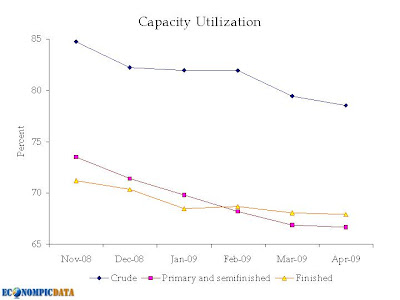WSJ reports:
The CLSA China Purchasing Managers Index, a gauge of nationwide manufacturing activity, rose to 51.2 in May from 50.1 in April, CLSA Asia-Pacific Markets said Monday.
May was the second consecutive month the CLSA PMI was above 50.0, after eight months of it being below the key level. A PMI reading above 50.0 indicates the manufacturing economy is expanding, while a reading below 50 indicates contraction.
"For the first time the PMI shows genuine evidence that policy really is gaining traction. While the export orders index remained just below the 50 neutral threshold, total orders jumped to the highest level for 10 months," said CLSA's head of economic research, Eric Fishwick.
"The rate of destocking increased in May, encouraging in light of some anecdotal suggestions that production is running ahead of orders. In aggregate the reverse is true, pointing to sustained output growth in months to come," he added.

While I am not an expert to fully grasp whether China is baking the numbers, the tracking error between these PMI figures and electricity numbers are curious. Add to that this tidbit from the WSJ (hat tip Paul Krugman) and I think we should all be at least cautious of the Chinese rebound story.
The focus these days is on the mismatch between China’s electricity consumption and a key measure of industrial output.
For most of the past decade, China’s industrial value-added growth (IVA) –industry output less input costs – has moved broadly in step with movements in electricity consumption. But the relationship’s broken down recently: electricity use is still seeing negative growth, while IVA is growing at a decent positive rate again.
Some China analysts are crying foul: If IVA growth figures are being cooked, surely that means China’s recent GDP data have been overstated too. China’s statisticians use IVA output to estimate what accounts for nearly half of China’s GDP.
China’s association of electricity generators has a solution: it’s stopped publishing consumption data.

















































